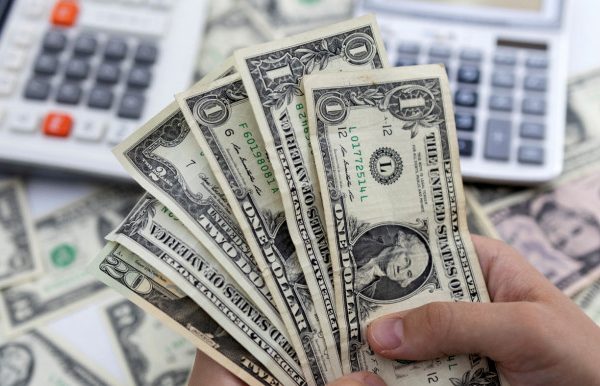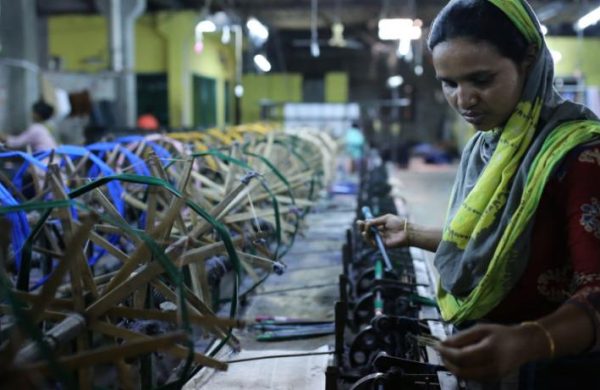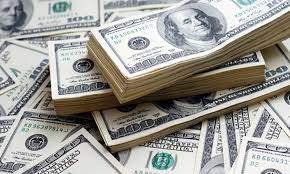Dollar rate falling fast
- Update Time : Saturday, July 19, 2025

Staff Correspondent:
Just a year after grappling with a severe US dollar shortage, Bangladesh’s foreign exchange market is now awash with the greenback.
This dramatic reversal has prompted the Bangladesh Bank to actively purchase dollars, a strategic move aimed at preventing a rapid appreciation of the taka and safeguarding the interests of exporters and remittance earners.
The surge in US dollar supply is largely attributed to subdued demand from the private sector, reeling from a sluggish business climate. This, coupled with the absence of price controls following the shift to a flexible exchange rate regime on 14 May, has created an oversupply, according to market insiders.
REBUILDING RESERVES AMIDST DOLLAR DELUGE
In a stark contrast to FY24, when the Bangladesh Bank net-sold $9.42 billion to combat a rapidly depreciating taka, it has now reversed course.
In July alone, the central bank embarked on a buying spree to curb further appreciation of the taka. The interbank exchange rate, which stood at Tk122.80, plummeted to Tk119.70 in the third week of July – a nearly Tk3 drop in just one week.
In response, the central bank intervened, purchasing $486 million through two auctions in just three days, highlighting the overflowing forex market. This shift has begun to impact exporters and remittance earners, who are now receiving fewer taka for their dollars.
Bangladesh Bank Governor Ahsan H Mansur confirmed the central bank’s strategy, that the purchases are intended to support exporters and stabilise the exchange rate amidst robust dollar inflows and weak import demand.
“We want to build reserves equivalent to at least six months of imports,” Mansur stated, revealing the central bank’s ambitious targets: to increase gross foreign exchange reserves to $30 billion within a year and further to $40 billion the following year.
Currently, gross reserves stand at just over $24 billion, covering less than five months of imports. An auction committee has also been formed to oversee dollar purchases and maintain exchange rate stability.
Mansur also highlighted that the increased dollar availability is expected to help reduce inflation, a core objective of the central bank, with hopes of seeing inflation fall to 5% by March next year.
While acknowledging weak private sector demand for dollars due to the prevailing political situation, he noted that the central bank is seizing this opportunity to rebuild a strong reserve base, which will enable it to support the market when private sector demand eventually rebounds.
There are currently no restrictions or margin requirements on imports, although the central bank’s influence on import levels remains limited until the political situation stabilises.
Data from the Bangladesh Bank indicates a significant shift in the balance of payments. In recent months, the combined monthly inflow from exports and remittances has exceeded import expenditures by over $1 billion, leading to a dollar surplus.
This is a reversal from previous periods when inflows consistently fell short of import payments. For instance, in May, combined export and remittance inflows were $7.1 billion, while import expenditure was $5.4 billion, resulting in a $1.7 billion surplus. From July to May of FY25, the combined export and remittance inflow exceeded import payments by over $8 billion, a substantial increase compared to just $1 billion during the same period in the previous fiscal year.
ECONOMIC RIPPLE EFFECTS
Standard Chartered Bangladesh CEO Naser Ezaz Bijoy views the recent fall in the dollar’s value as temporary, primarily driven by low private sector demand.
He attributed the significant increase in remittance inflows through official banking channels to a reduction in money laundering since last year’s regime change. Additionally, he noted that aggregators are offloading dollars in anticipation of further depreciation, further contributing to the oversupply.
Bijoy lauded the Bangladesh Bank’s prudent decision to purchase dollars, viewing it as a strategic move to rebuild reserves for future benefit. He also observed a “pent-up investment demand” in the market, with many investors holding back until the political situation stabilises.
However, Fair Group Chairman Ruhul Alam Al Mahbub offered a more cautious perspective, suggesting that the falling dollar price is not a positive sign for the economy.
He highlighted that investment activity is virtually stagnant, with no major sector expanding. The negative growth in imports of capital machinery and industrial raw materials, he warned, could severely impact employment and GDP growth in the near future.
While garment exports are still growing, Ruhul Alam expressed concern that they might soon be affected by upcoming US tariffs.
He also noted that while imports of industrial raw materials have seen slight growth, this is largely concentrated in the garment sector, with other industries suffering from weak consumption amidst high inflation. Furthermore, businesses are reportedly avoiding forward booking for dollars due to the taka’s rapid appreciation.
Bangladesh Bank data shows that imports of capital machinery registered a 25.56% year-on-year decline in July-April of FY25, following a 23.86% drop in the entire FY24. Imports of industrial raw materials, while growing by 10.73% during the same period, saw this growth primarily concentrated in textile fabrics and cotton yarn.
WHY BANKS ARE SELLING DOLLARS
Despite being awash with dollars, many banks face a shortage of local currency (taka), forcing them to sell dollars rather than hold onto them, thereby contributing to the increased supply in the market.
The head of treasury at a private commercial bank explained that this taka liquidity shortage stems from banks’ excessive investment in government treasury bills and bonds.
Previously, banks borrowed from the Bangladesh Bank at around 10% interest and invested in government securities yielding about 12%, creating a profitable spread. However, with increased dollar liquidity, interest rates on treasury bills and bonds have begun to decline.
Another factor contributing to increased dollar sales is the absence of a fixed exchange rate. With no central rate dictation, customers can now choose banks offering more competitive (lower) dollar buying rates.
Previously, all banks had to sell dollars at a uniform rate set by the Bangladesh Bank, limiting competition. Now, banks with large dollar reserves can offer better exchange rates, prompting importers to shift their Letters of Credit (LCs) to them.
Conversely, banks unable to sell dollars at favourable rates are compelled to offload them into the market to meet their taka liquidity needs, further increasing the overall dollar supply.
EXPORTERS, REMITTERS MISS OUT
The Bangladesh Bank purchased US dollars from banks at Tk121.50, while the market rate hovered around Tk120. These meant banks had already purchased dollars from remitters and exporters at Tk120 and then sold them to the central bank at a higher rate, pocketing a profit of Tk1.50 per dollar.
A treasury official lamented that this gain should have gone to the original sellers – the remitters and exporters – but instead ended up with the banks due to the central bank’s delayed intervention.
He argued that the Bangladesh Bank should have started buying dollars earlier, specifically when the rate dropped below Tk120, to prevent banks from accumulating dollars at lower rates and then selling them at a profit, thus depriving the original earners of a better exchange rate.
CASH DOLLAR MARKET REMAINS HIGH
Despite the significant decline in the interbank exchange rate, the cash dollar rate in the kerb market remains stubbornly high due to limited supply. The cash dollar rate has only dropped by Tk0.50, currently standing at Tk125, even as some banks are selling dollars at Tk122.50.
A senior executive of a private commercial bank confirmed they are currently selling cash dollars at Tk122.50, a slight decrease from Tk123 last week.
He noted that the cash dollar rate remains elevated because it is not directly linked to the movement of electronic (interbank) dollar rates. He also pointed out that banks are still charging higher rates for dollar transactions via credit cards than the official interbank rate.
















